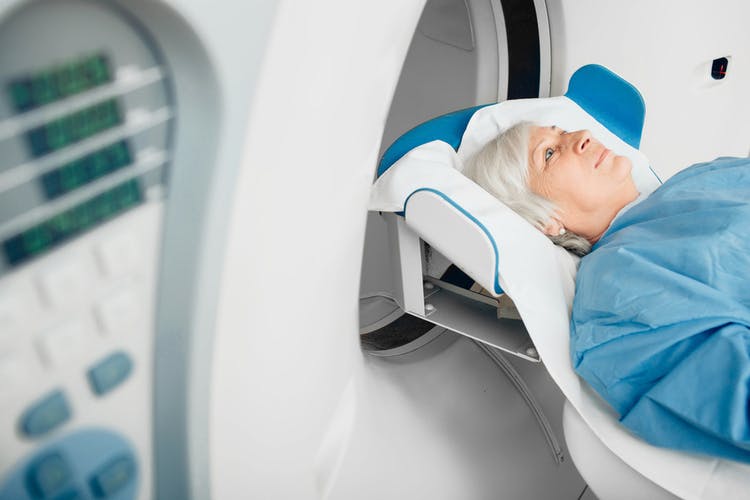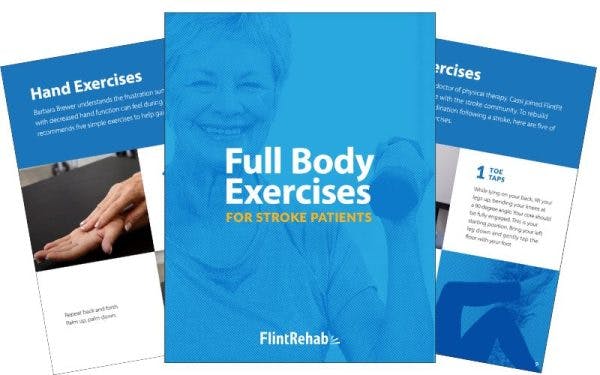Determining the difference between vertigo vs. stroke can be challenging, which leads to frequent misdiagnosis. This can have serious consequences when stroke is not treated in a timely manner. Understanding the difference between vertigo vs. stroke means tens of thousands of lives can be saved each year – and a new testing technique can help.
In this article, we will review the difference between benign vertigo and stroke and their common symptoms. Then, we will be discussing how each condition is tested and diagnosed. Understanding these differences has major implications for healthcare providers and patients alike. With time, we may be able to reduce the likelihood of misdiagnosis for individuals affected by stroke.
Comparing the Symptoms of Stroke vs. Vertigo
Stroke Symptoms
Before we discuss how a stroke is diagnosed when vertigo is present, let’s briefly cover the cause of a stroke. A stroke occurs when the supply of blood in the brain is compromised, leading to tissue damage. This can take place when an artery is blocked (ischemic stroke) or when an artery bursts (hemorrhagic stroke). A stroke is a medical emergency and timely detection is vital.
Until a stroke is treated, tissue damage within the brain can continue to occur. Depending on the area of the brain affected, survivors can experience secondary effects that impact muscle function, sensation, cognition, and emotions. For this reason, it is important to familiarize yourself with the different stroke warning signs to help protect yourself or a loved one.
The hallmark symptoms of a stroke include facial drooping, weakness of an arm or one side of the body, and slurred speech. Additional symptoms can include headache, nausea, numbness, confusion, and vertigo.
Vertigo
Vertigo is a sensation of intense dizziness that can be accompanied by nausea. Someone affected by vertigo may feel as if the world is tilting or spinning around them. This condition can result from problems in the inner ear, which is considered benign vertigo and can include BPPV. Additionally, vertigo can take place due to issues with the brain or sensory nerve pathways.
While the symptoms of vertigo sometimes overlap with stroke, they are atypical symptoms and do not present in every case. Since vertigo can have many causes, a stroke may not be considered initially when you or a loved one present with this symptom. Specifically, individuals experiencing vertigo due to a cerebellar stroke may not present with any of the other hallmark stroke symptoms at all.
This can lead to misdiagnosis, which unfortunately leads to increased disability or even death. This is because tissue damage within the brain increases the longer a stroke goes untreated. One research study found that the rate of complications and mortality increases by as much as 40% when a stroke diagnosis is missed. For this reason, ordering the right test at the right time is vital to determine if someone is experiencing vertigo vs. stroke.
Testing & Timing Make the Difference
A brain scan is the most common way to diagnose a stroke so that doctors can proceed with proper treatment. These tests include MRI scans or CT scans to detect changes in the brain. While there are other tests that can be utilized, such as an angiogram, MRI and CT are performed most often.
MRI scans are superior at detecting strokes but are more expensive. This makes CT scans more popular, and they are ordered for about 40% of emergency room admissions for dizziness. The downside is that CT scans miss more than 80% of strokes in the brain stem and cerebellum.
This is an alarming problem because brain stem strokes and cerebellar strokes are particularly known to cause vertigo. In fact, about 3% of patients presenting to the emergency room with vertigo are actually experiencing a cerebellar stroke. This could imply that doctors should opt for an MRI scan over a CT scan when vertigo is present.
Unfortunately, even if this precaution is taken, it does not completely solve the problem. It can be difficult to detect a stroke in the cerebellum or brain stem, even with a more specific brain scan like an MRI. This puts doctors in a tricky position. What kinds of tests should be conducted when vertigo is present, and when?
Tests Used to Diagnose Vertigo vs. Stroke
When vertigo is caused by problems in the inner ear, it’s considered benign vertigo (non-harmful vertigo). This disruption of the inner ear, or the vestibular system, can have many causes. Doctors often check for benign vertigo if it’s the only symptom present.
However, further measures should be taken when vertigo is persistent or accompanied by additional symptoms. If individuals are also experiencing nystagmus (rhythmic, involuntary eye movements) and nausea or vomiting, there’s a test available to detect a stroke called the HINTS test. HINTS stands for Head-Impulse/Nystagmus/Test-of-Skew.
This refers to a 3-part eye movement test where specialists analyze small changes in eye movement to detect a stroke. This test has been found to be more sensitive than imaging for detecting posterior circulation strokes, which include a stroke in the cerebellum or brain stem. The caveat is that this test only works if the medical practitioners have been formally trained in this procedure.
During the HINTS test, the provider will move the patient’s head through various positions as they watch for specific eye movements. They will also ask the patient to perform various gaze tasks while continuing to watch for abnormal eye movements or patterns.
HINTS for Stroke-Induced Vertigo
The HINTS test is an underutilized examination that takes just 1 minute to complete. However, while the HINTS test may help detect a stroke faster and minimize disability, resources for the HINTS test are limited. There continues to be a shortage of awareness for the test as well as a lack of physician confidence in performing and interpreting the test. In reality, it takes months or years of mentorship to train a physician to perform the test.
Fortunately, researchers have created a service to help with this called “Tele-Dizzy.” This service involves a pair of goggles that record eye movements and send the results for specialists to interpret remotely. David Newman-Toker, the main specialist spearheading this project, offers “Tele-Dizzy” services at the Johns Hopkins Hospital.
While this means crucial technology is only available on a limited basis, the researchers are working to expand it to other hospitals that can provide care around the clock. This provides hope for future generations to improve the accuracy of diagnostic testing for benign vertigo vs. stroke.
Want 20 pages of stroke recovery tips in an illustrated PDF? Download our free ebook by clicking here (link opens a pop up for uninterrupted reading)
Striving for Progress: Vertigo vs. Stroke
The best way to save a life is to know the symptoms of a stroke and seek emergency medical attention. Timely treatment is the greatest tool to minimize stroke secondary effects and even reduce the risk of mortality. However, this can become more complicated when stroke symptoms are atypical. This includes individuals presenting with vertigo as their main stroke symptom.
In the emergency room, pay attention to which tests the doctor orders, and when. If a CT scan is ordered and your loved one has vertigo, ask the treating physician if they can accommodate an MRI scan. This way, you can increase the chances of an accurate diagnosis if the vertigo is caused by stroke.
While relatively new, the HINTS test has been shown to be highly sensitive for recognizing posterior circulation strokes contributing to vertigo. However, it will take time for hospitals to adopt the HINTS test, if at all. Hopefully, you can make a difference by asking the right questions of your loved one’s treating physician. Furthermore, help educate your family and friends on the difference between stroke vs. vertigo.
We hope this article has helped clarify the difference between benign vertigo and stroke-related vertigo. With time, we hope the rate of stroke misdiagnosis can continue to decrease as the HINTS exam becomes more widespread. In the meantime, continue your pursuit of knowledge and keep taking steps toward forward progress.









